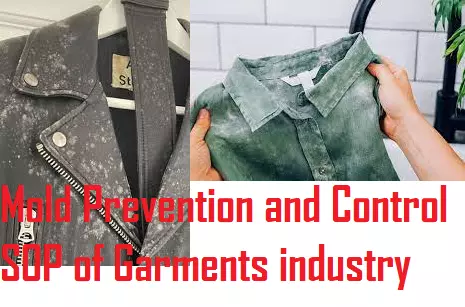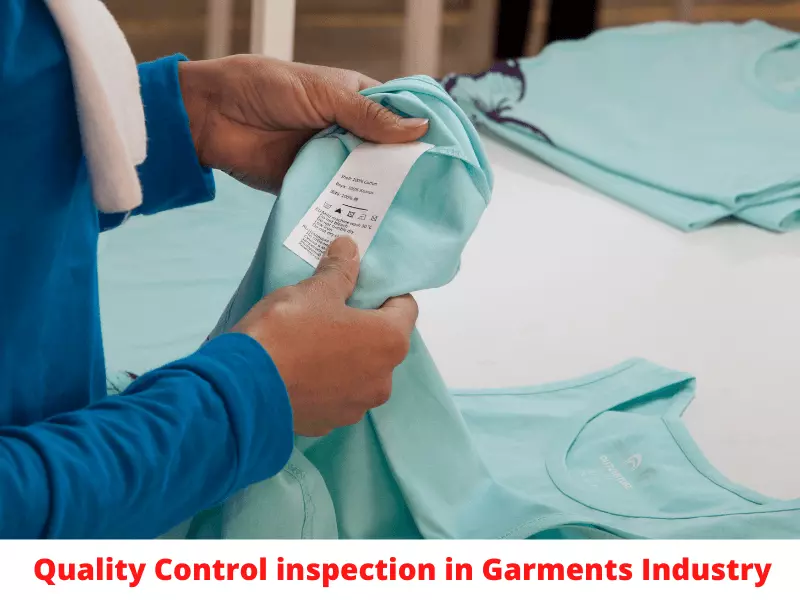Mold or ‘mould’ is a simple microscopic organism, present virtually everywhere in any organic product, indoors and outdoors. Molds, along with wood, mushrooms, and yeasts, are fungi and are needed to break down dead material and recycle nutrients in the environment. Molds simply require moisture and an organic food source, such as leaves, wood, paper, or dirt, to grow and proliferate. Mold slowly ruins everything it grows on because it consumes the organic stuff it grows on. The shape of a discoloration, which is commonly green, gray, brown, or black but can also be white and other colors, generally indicates the presence of mold development on surfaces. Molds produce a large number of spores that are little and fly through the air. Cladosporium, Penicillium, Aspergillus, and Alternaria are among the most prevalent indoor mold species. This content is about Mold Prevention and Control SOP of the Garments industry discussed below.
Mold is a dangerous thing to garments and the garment industry. So, we need to prevent mold from garments. To ensure that Raw materials/Panels/Garments are free from moisture to prevent possible mold, some actions are necessary for the garments industry. Ensure that the packed garment’s moisture level is as per buyer requirements to avoid any possible mold. This SOP will use to control moisture and prevent any mold issues in garments.

Basic Task for Mold Prevention and Control
Maintain FIFO in RM and Finished goods warehouse
Keeping stock for a long time may cause for affecting mold. We should not keep raw materials and finished garments for longer periods. We need to check the old stock items at one-month intervals.
Moisture checking
Check the humidity of all fabrics/garments during production with a moisture meter. We are suggesting using AQUA BOY for its accuracy. Moisture should not be more than 7% in the process.
Production Floor Condition
All garment-washed articles must be dried properly. Must use steam irons with vacuum tables. Garments should remain exposed for several hours, depending on the thickness of the fabric/yarn, before putting them into final packing. When using spot remover, the garment must be completely dried before packing. Damaged or wet cartons must be replaced immediately and the condition of the content of the cartons must be checked.
Humidity Contol of production floor and Warehouse
The relative Humidity (RH) % level should be less than 55% on the floor and warehouse of the garment. Garments must be produced in clean conditions and kept off the floor during production. The production floor should be free from dust, food, and water. Keep hanging the Humidity meter in every section and monitor daily and record it 3 times a day.
Moisture inspection before Packing
Packing is the last step to check the moisture. If we can pack garments in good condition, there will not have any chance top gain moisture after packaging. Moisture percentage should be less than 6% before packing, so there will not have any chance to get affected mold. If can see more moisture before the packing stage, we need to dry those garments to reduce the moisture level.
Keep Silica Gel inside of Carton box
Silica Gel is a drying agent which can absorb moisture from the inside of the product and carton box and it can keep dry the area. So, we can use silica gel inside of garment bag. It will help a lot to prevent mold.
Warehouse Condition
Make sure fabric, trims, and accessories suppliers deliver goods well-protected and in good condition. Store fabrics Roll in a clean well-ventilated room, on pallets, not touching the walls. Clean Fabric store regularly.
Shipping Cargo/ Container/trailer inspection
Shipping containers/trailers have to be inspected before loading carton boxes on them. A specific checklist to follow. The container inside is neat and clean. The inspection covers the whole container, to ensure nothing is there to threaten mold. Make sure with no water leakage, the container floor will fully dry before loading cartons.


